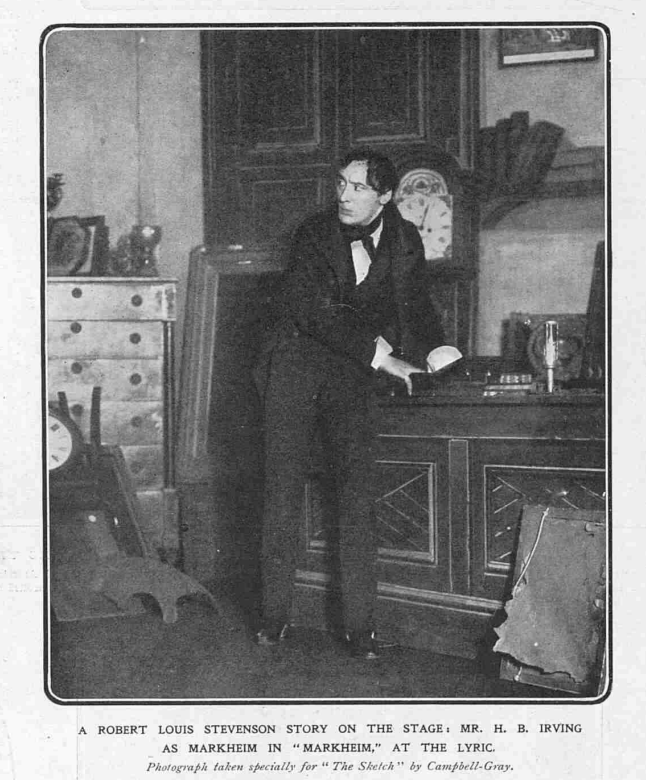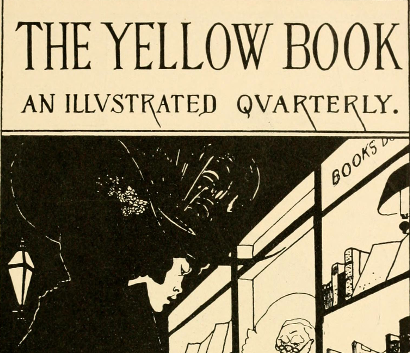Dr Matthew Shaw, Librarian
In 1880, the writer Robert Louis Stevenson contacted the editor of the Pall Mall Gazette about the title of a short story on which he was working: ‘Probably “Markheim” is as good a name as I shall find for the story, in case you are in haste to use it’. Despite the doubts, the eponymous title stuck, and when the tale was subsequently published in Unwin’s Christmas Annual in 1885 (after the story was pulled from the Gazette for being too short and replaced by The Body Snatcher), the tale appeared under that designation.
The short story Markheim has been read as thematic precursor to The Strange Case of Dr Jekyll and Mr Hyde (1886), and one that draws on Stevenson’s contemporary reading of Fyodor Dostoyevsky’s Crime and Punishment (which Stevenson had read in French in 1884). The stark eponymous title has also attracted comment, raising questions about names and identity.[1] The short story’s eponymous protagonist, a petty thief who is also a ‘neurotic intellectual’, [2] has entered an antique shop on Christmas Day with some things to sell. When he is accused of having stolen the items, he kills the nameless shopkeeper in a fit of rage. The remainder of the gothic tale explores Markheim’s psychological state, as he descends further into guilt-ridden despair and grief during a search for a key to the shopkeeper’s safe. A stranger appears, whom Markheim believes is the devil. After a period of mental struggle, Markheim – with relief – summons the police on himself. The text of the story, which is now held at Harvard’s Houghton Library, which was written during one of Stevenson’s bouts of illness at Bournemouth, creates a fevered intensity for the reader.[3] Well received by the press, and like The Strange Case of Dr Jekyll and Mr Hyde, the work has influenced others’ imaginations over the years. A theatrical adaption was produced at The Lyric, starring Harry B. Irving, followed by a Carnegie-winning opera by Philip Napier Miles in 1919, with other operas in 1966 and 2015, several radio dramatizations (including Laurence Olivier as Markheim in a broadcast of a Theatre Royal production and a reading by Hugh Bonneville in 2007), and a teleplay including a BBC Scotland production in 1974, starring Derek Jacobi. As for the text, Stevenson included it in the Merry Men and Other Tales and Fables (1887).[4]
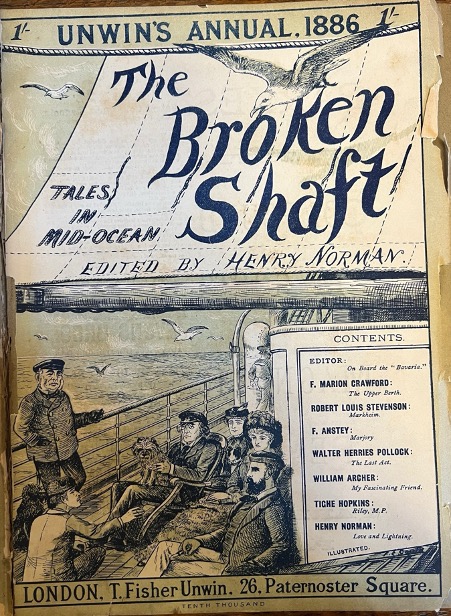
Was the title ‘as good a name’ as Stevenson could find? It certainly frames the story in a particular way, placing this intense sketch of a character front and centre. Nomenclature, or namelessness, informs something of the tale. The – nameless – antiques dealer refuses to reveal the name of the owner of a hand-glass: ‘I reserve the name, in the interests of my customer, who was just like yourself, my dear sir, the nephew and sole heir of a remarkable collector.’ [5] The moment of frantic murder is framed by the ‘empty sound’ of the name of the victim:
Suddenly, from the street outside, a very jovial gentleman began to beat with a staff on the shop door, accompanying his blows with shouts and railleries in which the dealer was continually called upon by name. Markheim, smitten into ice, glanced at the dead man. But no! he lay quite still; he was fled away far beyond earshot of these blows and shoutings; he was sunk beneath seas of silence; and his name, which would once have caught his notice above the howling of a storm, had become an empty sound. And presently the jovial gentleman desisted from his knocking and departed.
[6] ‘Markheim’, p. 90
Might more be said of it? Was there an origin for ‘Markheim’, a relatively unusual name during this period in Victorian Britain, with Germanic origins in Poland. ‘Mark’’s meanings include ‘essence’, and ‘heim’ suggests ‘home’; after all, Markheim ‘longed to be home, girt in by walls’. [7] A translation, it is suggested, might be ‘seat of the soul.’ There is, though, also a possible and intriguing link between the story and The Queen’s College. Markheim, Fellow in French, is remembered today through our prize in French (funded by successful Canadian investments – something possibly alluded to in the text). Born in 1845 in Smyrna, Henry William Gegg Markheim studied at University College, where he took a first in Literae Humaniores in 1867. He became a Fellow of Queen’s on 24 October 1871. In 1906, he died at the age of 61 of heart failure. Like Stevenson, he too suffered with ill-health.
Markheim possessed something of a career beyond the academy. His facility in French allowed him to serve as translator on the Alabama Claims arbitration process in Geneva, which famously resolved the dispute between Britain and the United States caused by the sinking of the U.S.S. Alabama by the British-built-and-supplied Confederate cruiser (along with other vessels, which the U.S. accused Britain of ‘persistent absence of real neutrality’ in contradiction to International and British domestic law). In 1872, the Foreign Office retained Markheim, who had recently graduated, as Sir Alexander Cockburn’s translator and clerk; Markheim worked hard on the case on occasion starting work at six in the morning, perhaps necessitated by Cockburn’s lack of abilities. [8] Markheim’s translation work continued to place him in court and in another of the Victorian Age’s most famous trials, that of the Titchborne case, in which an identity was claimed by another: in 1874, Markheim provided a translation of certain letters written by Roger Titchborne in French before his disappearance. Markheim had at least one further encounter with the law, when some of his luggage was stolen at Paddington Station: the theft made several of the newspapers.
As well as his work as a Fellow, he took on the role of inspector of schools and examined for the Civil Service Commission and other boards. Markheim also had something of a public profile. He had been in Paris during the Commune (along with his family and ill-tempered Persian cat), where he observed the war at first hand, leading to the publication of the popular anonymous account Inside the Paris Siege by an Oxford Graduate in 1871– still often cited today. The copy held by the College has the name of the poet and writer Sir Edwin Arnold misattributed by an earlier cataloguer. Markheim’s talks to schools were also published. [9]
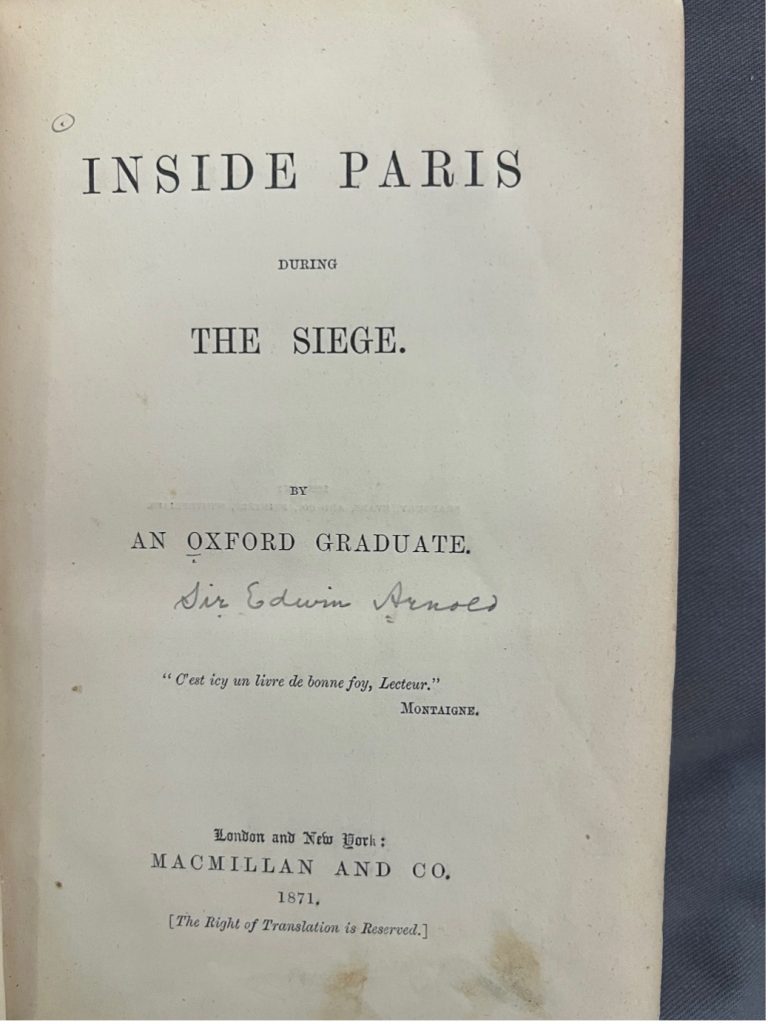
The Paddington train is a clue to Markheim’s London life, away from Oxford. Like many men of his age, he was a member of a London club in the 1870s: Markheim’s was the Savile Club, a new and somewhat bohemian club connected to the arts, the sciences, journalism, and the stage. [10] At least two other Queen’s Fellows were members: George Simcox and A. H. Sayce, who kept up his membership until ‘it migrated into the fashionable purlieus of Piccadilly’. [11] In 1874, the same year that Markheim joined, Sidney Colvin, the Fitzwilliam Museum director and, from 1884, keeper of prints and drawings at the British Museum, proposed Stevenson’s membership to the fashionable club. [12] It, and the circle that gathered there, became a key site of sociability (and literary gestation) for Stevenson. Markheim joined the club that same year, and soon became a prominent Savile character. [13]
In October of that year, in a letter to his mother, composed at a Euston Station hotel (Stevenson appeared to enjoy evoking his clubland life to her), Stevenson refers to his great new friend, an Oxford don:
I was sucking up this evening at the Savile, to my present ideal of all that is good and great in humanity – one Markheim, a Pole with an Irish mother; at the bar and an Oxford Don; and a man, as I say, whom I adore – for the immediate present’
[14] Robert Louis Stevenson to his mother, 16 October 1874, Ernest Mehew, ed., Selected Letters of Robert Louis Stevenson, Yale University Press, 2001 p. 94.
Markheim and Stevenson’s paths had clearly crossed. Markheim clearly made an impression on Stevenson, something that suggests a powerful personality. A later letter to Stevenson’s mother (5 December 1874) is mentioned at the head of a list of the excellent company at the club that night, something of a tribute to Markheim’s vitality. [15]
Might this connection have proved the basis for the title of Stevenson’s story, even if only in terms of a name that Stevenson might remember from his youthful expeditions to London? Searches of genealogical websites suggest it was a relatively rare, and hence distinctive, surname. Is it possible to imagine some form of joke or even bet emerging from the Club? After these early associations, there are no further mentions in the letters, so Markheim appears to be a character Stevenson only knew in the context of the Savile Club, and had no further obligation of friendship. The distinctive name may have been drawn from his subconscious as during the fevered period of composition, and its slightly foreign nature – something Markheim emphasises in his maternal letter – may also have added to that character’s sense of not quite fitting in. Perhaps there is something further, too, in this tale of a double character. Markheim, the protagonist, although a thief in terms of his actions, is clearly something of an intellectual. Might Stevenson have borrowed Markheim’s donnishness (in the sense of intellectual questioning) as well as his name for his tortured character? In contrast to Stevenson’s character, the genuine Markheim appears to be a much more solid, and comfortable in his own skin. The endowment of the College’s Markheim translation prize in French is a reminder of the Fellow’s success in investing, unlike the Markheim in the antique shop: (‘“You are to use this money on the Stock Exchange, I think?” remarked the visitor; ‘and there, if I mistake not, you have already lost some thousands?”’ (Markheim, p. 85)). It is also worth noting that Stevenson did not change the name during the path to publication, despite the opportunity to do so. It was clearly just right.
The loan of Markheim’s name has been suggested at least once before: in The Times’ 1914 report of the sale of Stevenson’s letters as a young man at Sotheby’s, which included the letter to his mother quoted above. The newspaper confidently asserts, he refers to ‘a man named Markheim, whose name he has given to one of his most powerful short stories’. [16] Finally, there is another possible case example of Stevenson’s borrowing of names of real people – or at least of the desire to draw on them in his creative process. Walter Jekyll, the brother of the gardener, Gertrude, knew Stevenson as a priest in Bournemouth, before he headed to Jamaica. According to Jekyll’s brother Herbert, he may have lent his name to the fictional Dr Jekyll and left England not just to become a painter, but to avoid the comparison between the character and his sexuality. [17] Markheim, as far as we know, does not seem to have been troubled by any link between him and the Christmas antique shop visitor.
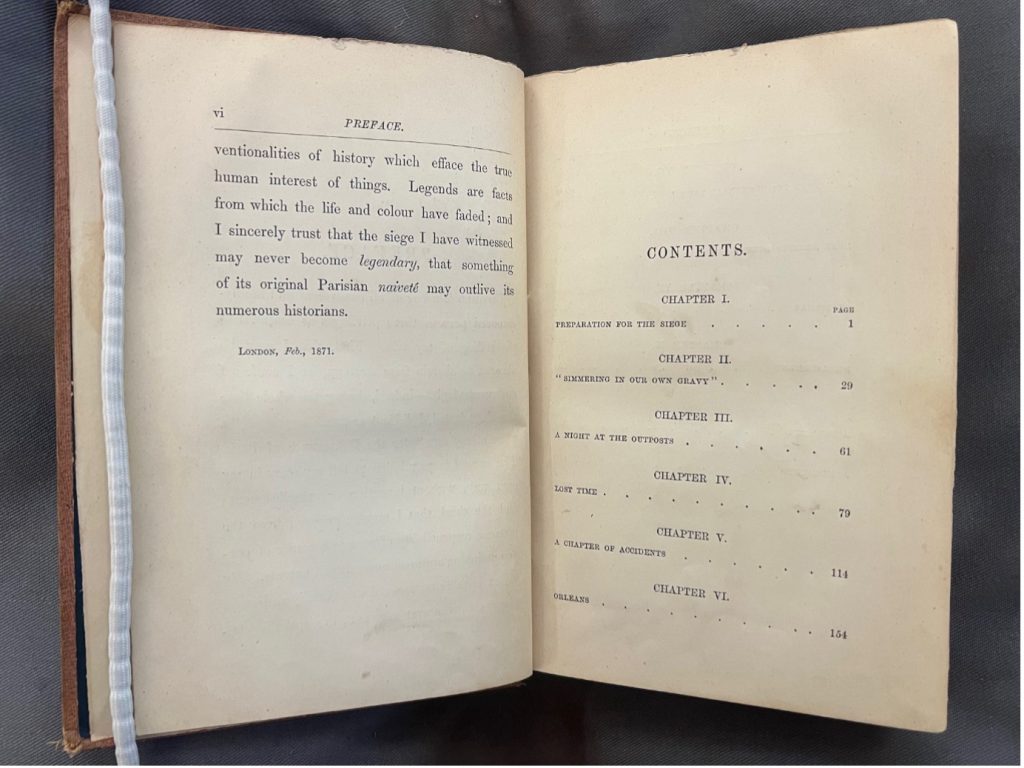
[1] For example, Oliver Mark Tearle, ‘Bewilderments of Vision: Hallucination and Literature, 1880-1914’, DPhil thesis, Loughborough University, 2010. On Robert Louis Stevenson, see Claire Harman, Robert Louis Stevenson: a biography, Harper Collins, 2005. The author would like to thank Prof. Harman for her comments on this post.
[2] Tom Hubbard, Seeking Dr Hyde: Studies in Robert Louis Stevenson, P. Lang, 1995, p. 15.
[3] On Stevenson in Bournemouth, see www.lrb.co.uk/the-paper/v42/n10/andrew-o-hagan/bournemouth and edrls.wordpress.com/2020/06/18/stevensons-bournemouth.
[4] For photographs of the 1906 production at The Lyric with Harry B. Irving, see The Sketch, 25 April 1906, pp. 37, 46. Irving ended his theatrical career after the First World War, and after studying law, wrote a series of studies of notorious criminals.
[5] ‘Markheim’, in Roger Luckhurst, ed., Strange Case of Dr Jekyll and Mr Hyde and Other Tales, Oxford World’s Classics, 2008, p. 86.
[7] ‘Markheim’, p. 194, 92.
[8] Richard Brent (2022) ‘The Alabama Claims Tribunal: The British Perspective’, The International History Review, 44:1,21-58; see note 81.
[9] Sayce, Reminiscences, p. 63.
[10] Savile Club, Rules and List of Members, July 1874.
[11] Sayce, Reminiscences, 1921, p.124. Sayce and Stevenson were known to one another from Edinburgh, where Stevenson – ‘lanky, young, and as yet unknown to fame’ – acted as a tour guide thanks to a mutual friend; despite this, Sayce ‘never met him again’. Sayce, Reminiscences, p. 101. Sayce joined the club in 1878; George Augustus Simcox, classicist, poet and another Queen’s Fellow, became a member in 1877 (Savile Club, The Savile Club, 1868 to 1923, p. 113.
[12] The Works of Robert Louis Stevenson, Swanson Edition, 2020, p. 11. On Stevenson’s somewhat complicated relationship with the Savile Club, and its social hierarchies, see Robert-Louis Abrahamson, ‘“Here Gather Daily Those Young Eaglets of Glory”: Robert Louis Stevenson, the Savile Club and the Suicide Club’. Cahiers Victoriens et Édouardiens, no. 81 Printemps (6 September 2015). https://doi.org/10.4000/cve.1964. Sidney Colvin, Memories & Notes of Persons & Places, 1852-1912. New York: C. Scribner’s Sons, 1921, p. 119.
[13] Savile Club, Rules and List of Members, July 1874.
[15] I am grateful to Claire Harman for these readings of the impression Markheim may have made in the Club.
[16] ‘Stevenson in Youth: outlook on life at twenty-three’, The Times, 30 June 1914.
[17] Wayne F. Cooper, Claude McKay: Rebel Sojourner in the Harlem Renaissance, LSU Press, 1996, p. 30. On McKay as Jekyll’s protégé, and the parallels between Jekyll and Jekyll, see Rhonda Cobham, ‘Jekyll and Claude: the erotics of patronage in Claude McKay’s “Banana Bottom”’, Caribbean Quarterly 38, no. 1 (1992), pp. 55–78.
